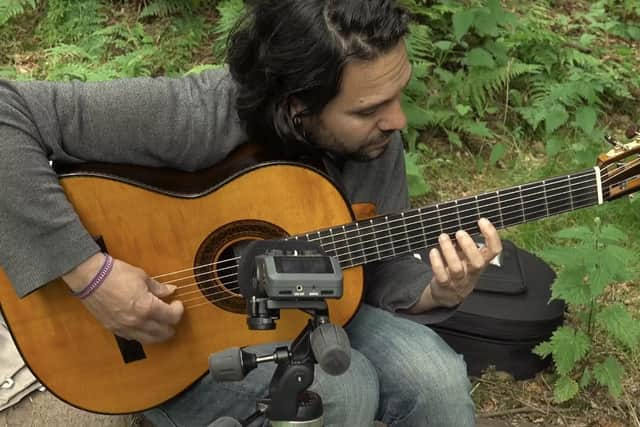The Scotsman Sessions #328: Morgan Szymanski and Tommy Perman
In 2019, two longstanding friends who first met as teenage schoolboys, then followed divergent paths in music, returned for five midsummer days to a cottage near Milnathort, Kinross-shire. The resulting album, Music for the Moon and the Trees, is their striking response to the surrounding natural environment.
Their Scotsman Sessions video, Spruce Wood Improvisation, offers a taste of the newly released album, with Mexico-based classical guitarist Morgan Szymanski coaxing chimes and flurries of notes against birdsong and woodland murmurs, while Tommy Perman manipulates computerised sampling and improvisation.
Advertisement
Hide AdAdvertisement
Hide AdSzymanski and Perman first met at Edinburgh’s Broughton High School, where the guitarist, son of a Scottish mother and Mexican father, was attending the City of Edinburgh Music School based there. The two friends often camped at the restored cottage, owned by Perman’s family.


Szymanski went on to the Royal College of Music in London and the Conservatorium van Amsterdam. Having returned to his native Mexico, he has been lauded internationally and can be heard frequently on BBC Radio 3. Perman became an artist, designer and musician with a particular interest in the interface between all three disciplines and in collaborative work. His visual creations have been projected on structures as diverse as Sydney Opera house and historic Edinburgh closes.
The bond the pair forged as teenagers has never weakened. “Very quickly there was this connection through music which has carried on,” Perman, now 43 and living in Kinross, recalls. “It’s the kind of friendship where we might not see each other for several years but feels like we’re always just picking up where we left off.”
Perman had suggested that they get together to record, originally planning to use a studio in the Dundee art college where he was teaching. Building work precluded this, however, and the pair repaired instead to his family’s rural retreat, which runs on wind and solar power. “Once gathered there in the woodlands, we just embraced the spontaneity and let all of it inspire us.”
“Ambient music” can come with negative associations of stasis, but Perman, who produced the album during lockdown, happily accepts the term: “In a literal sense we were capturing that woodland ambience and taking our lead from that.”
Szymanski arrived bearing a new guitar he’d just collected from master luthier Luciano Lovadina in Venice. Made from the red spruce favoured by Lovadina, its resonant brilliance can be heard against a rich background tapestry of woodland sounds. There’s also input from Claude Debussy (who shares a birthday with both Szymanski and Perman’s father) via his Clair de Lune, notably in the haunting Canción de la Luna, while other guests include local bats, their sonically enhanced chatter whirring through guitar slides and harmonics in Pippistrellus.
As well as its cross-disciplinary element, Perman reckons the album reflects both musicians’ environmental concern: “It was made for virtually no money and just with what we were able to borrow and use. I’d love it to be an example of what can be done with minimal resources.”